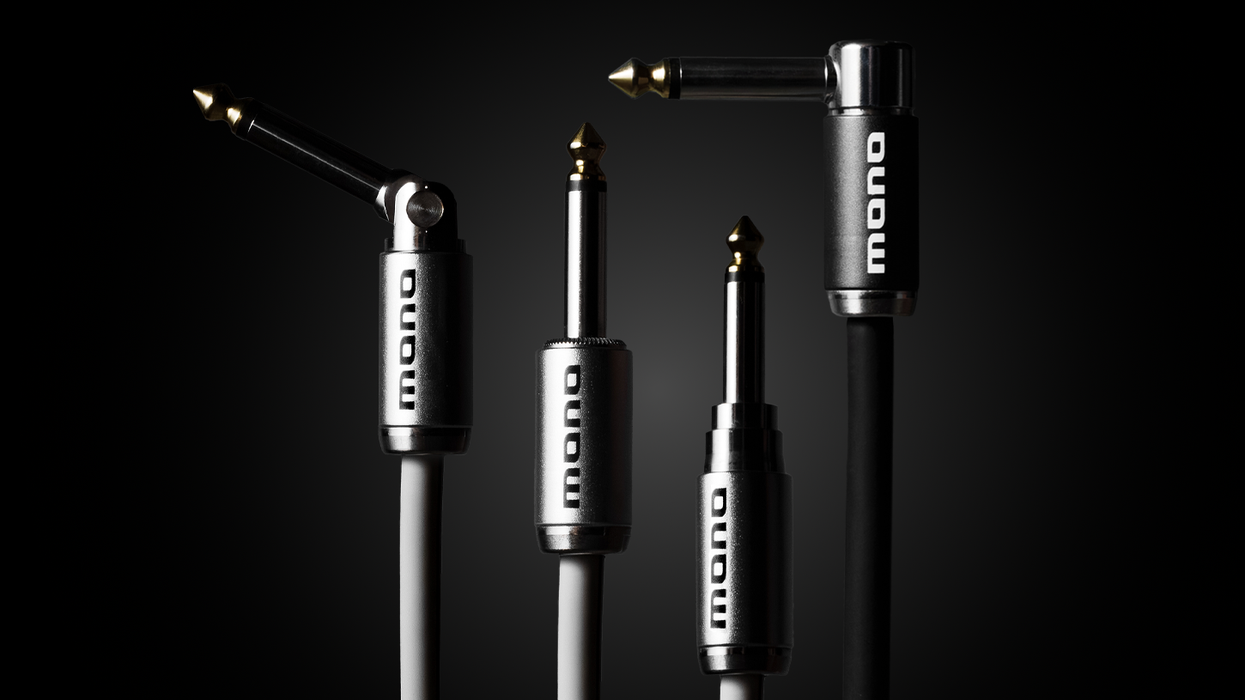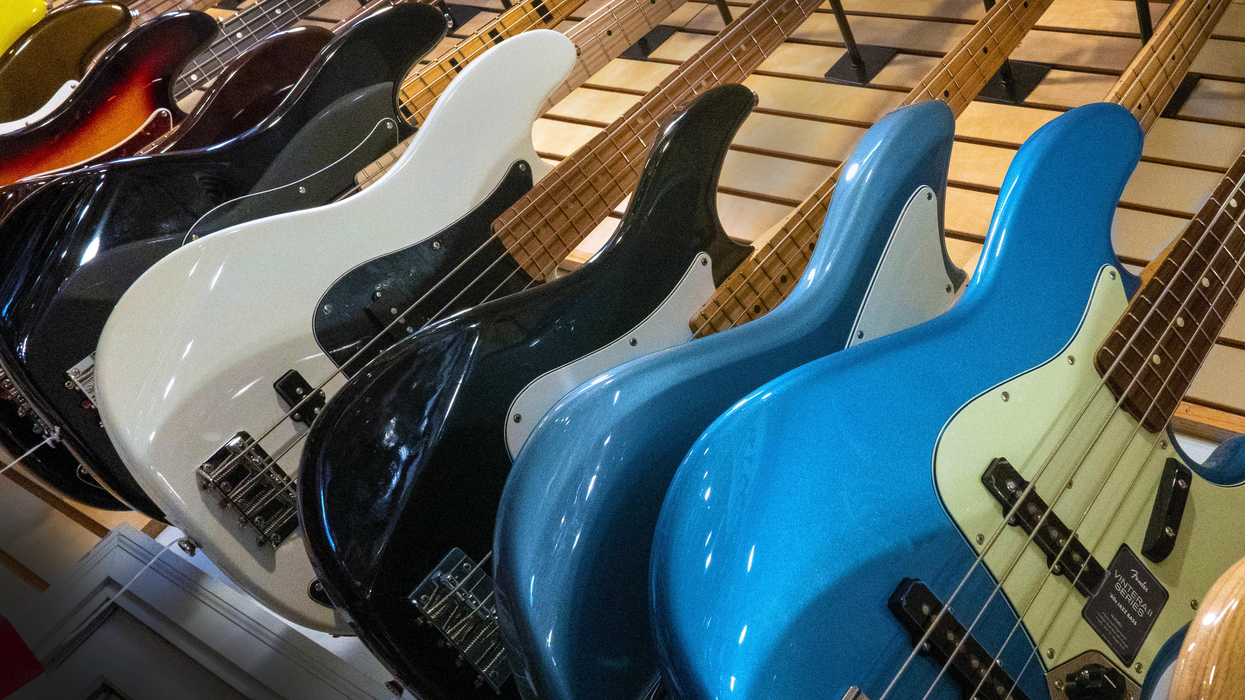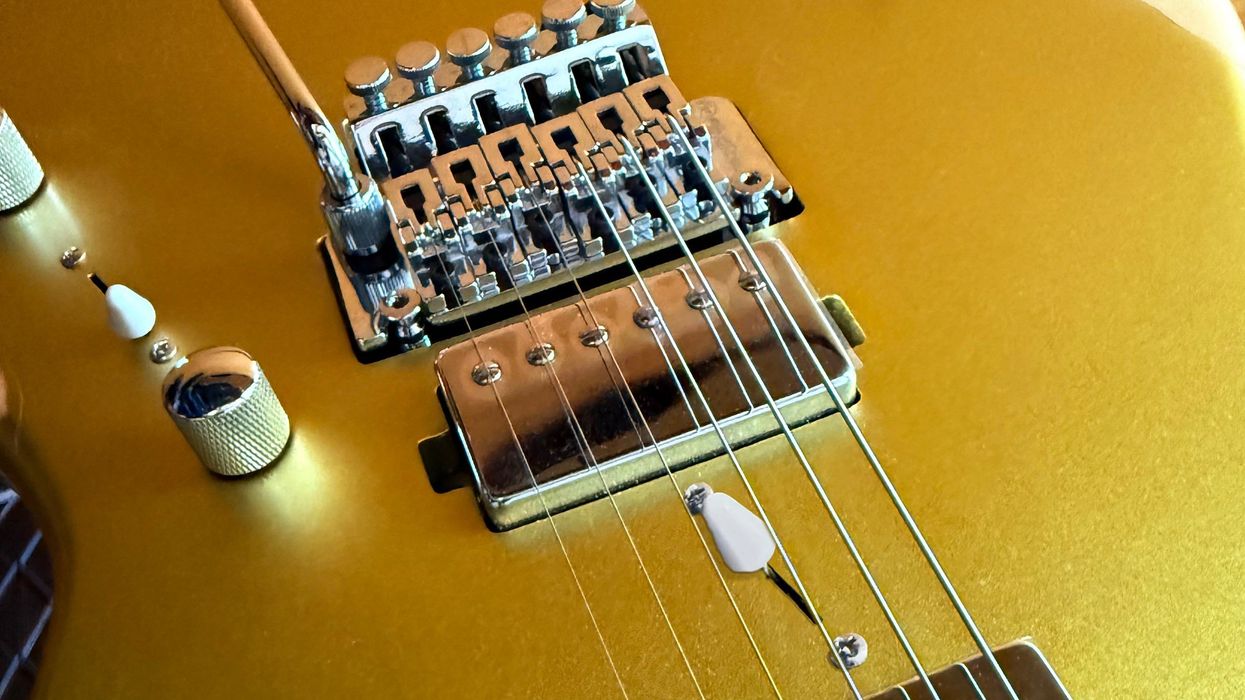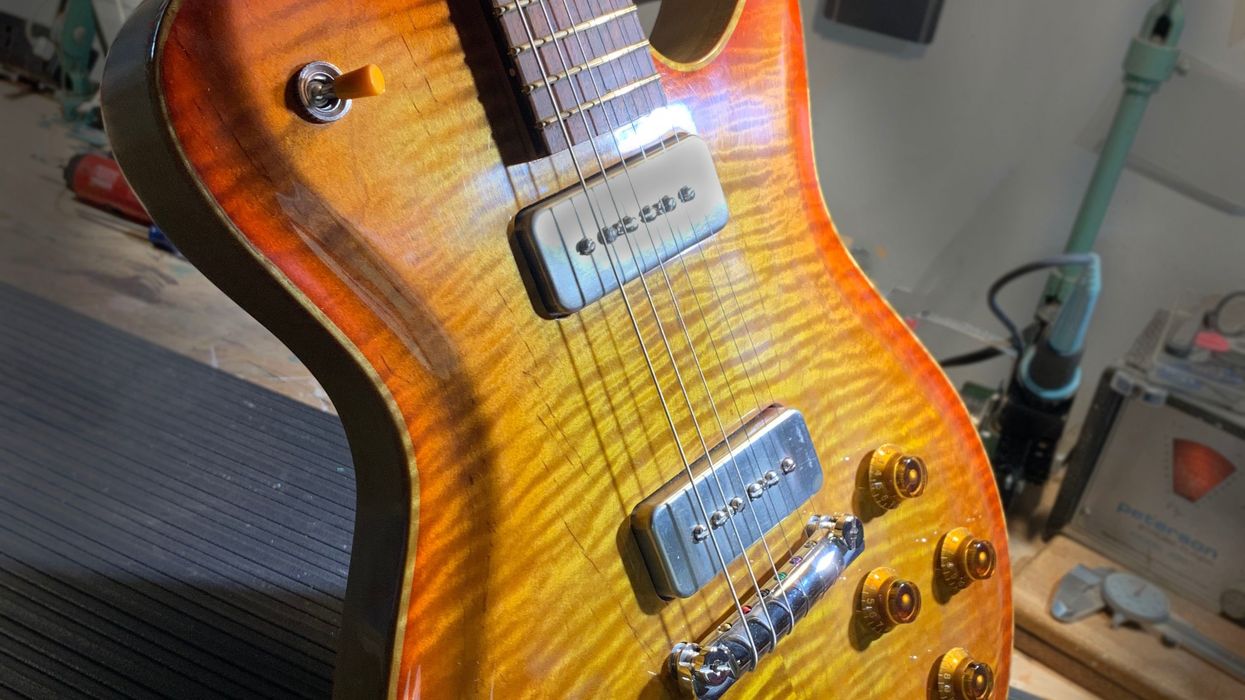When I'm asked what the most important tool in a guitar shop is, I usually respond with “the clock." That's because if you don't know how much time every aspect of your build process takes, you're probably losing money. People assume that the biggest cost in guitar making is the raw materials, but it's really the labor. If you don't pay yourself a salary and provide yourself with health insurance, however, you can skip this logic, because then we're talking about your hobby.
If you want to talk go-to woodworking gear, I'd have to say an overarm pin router would top my list as the best and most important tool you can buy. Sure, CNC routers are sexier—and who doesn't love screwing around with computers—but for pure versatility, it's hard to beat a pin router.
There are numerous pieces of equipment that can be used for guitar making, from handheld laminate-trimmers and plunge routers, to shapers, sanders, and band saws. To start, you'll have to either buy wood that's pre-dimensioned into blocks (billets) or cut it to size yourself from full boards. But then you'll need something to turn those blocks into the fancy shapes needed for a guitar. Even though the pin router has been around for a century, it's still a great tool for exactly that.
A pin router can cut shapes and contours, as well as drill holes and make slots. I use one to pre-carve the shape of my necks and rout the headstock shape. You can even cut parts like headstock overlays to extremely thin dimensions (.062" or less) using a fly cutter. It's damn good at cutting the profile of the necks and bodies, as well as the pickup and control routs. But a pin router is much more nuanced than just those tasks. In fact, the only limit to this versatile tool is your imagination.
The way it works is simple. The spinning router bit plunges downward to a preset depth (usually with a foot control) over a metal table with a pin directly below the bit. The pin acts as a follower that allows you to either use the actual part or a form holding a part as a guide. Pins can be the same size as your bit, or different diameters to create offsets. I have an entire set of pins in various increments, both larger and smaller. It's what I use to cut rabbets (notches) for all sorts of binding combinations.
to beat a pin router.
You can also use a pin router for basic inlay work. Most commercial machines have collets for bits with 1/2"-diameter shanks, but you can buy collets and adaptors down to 1/8" for a reasonable cost. That allows you to use cutters as small as .062" or even .023", which are good enough for basic inlay patterns. If you only cut a shallow depth, it's actually pretty easy to follow a pencil line freehand. Also, .023" is just about right for fret slots, too.
Using a fence, it's possible to joint edges for gluing, or cut a truss-rod slot. Rounding bits can put a soft edge on headstocks and bodies. Chamfer and round-profile bits can make all manner of edge profiles for unusual designs or just to hog out belly and arm contours on guitar bodies. As I mentioned earlier, there's not much this machine can't do.
Before you splurge for one, however, make certain your shop's power is up to the job. Most of these routers are big and require three-phase power. If it's going in your basement or garage workshop, you might want to look at some of the smaller single-phase models that you can plug into a 220-volt dryer outlet, or wire up from the household panel. Tip: Don't forget to think about how you are going to get 1,000 pounds down your stairs. Prices range from around $2,500 to $10,000 for a new machine, but you can save a lot of money buying a used one. (I got mine for $900 from a cabinet shop that didn't realize replacing the spindle bearings was a $50 job.)
Probably the most amazing thing about an overarm pin router is its ability to clone shapes and make its own templates. For instance, if you double-stick tape a Telecaster body to a piece of birch plywood, Plexiglas, masonite, or phenolic, you can use the body as your guide to cut your material into a template, and make more Telecasters! This works for the profile shape as well as the pickup routs. So, in about 20 minutes, you're in the body business. Of course, you'll need a clock if you want to make any money.
















